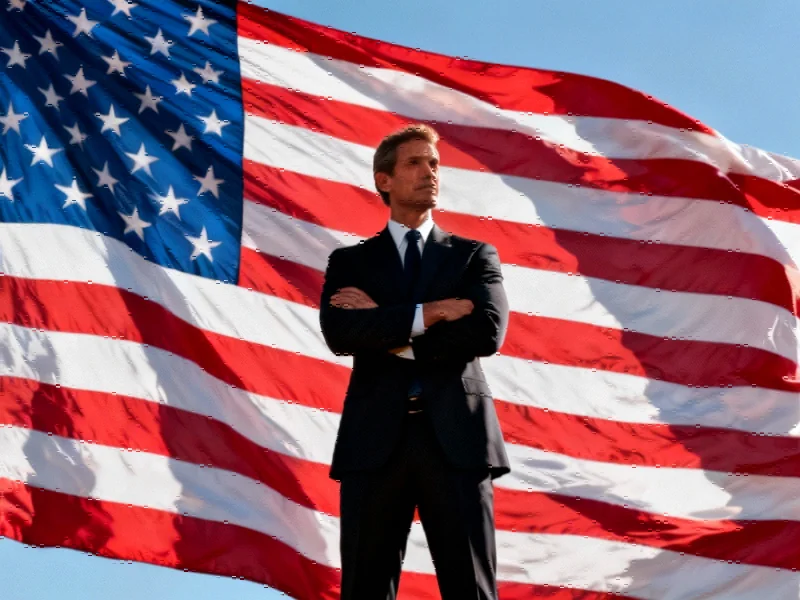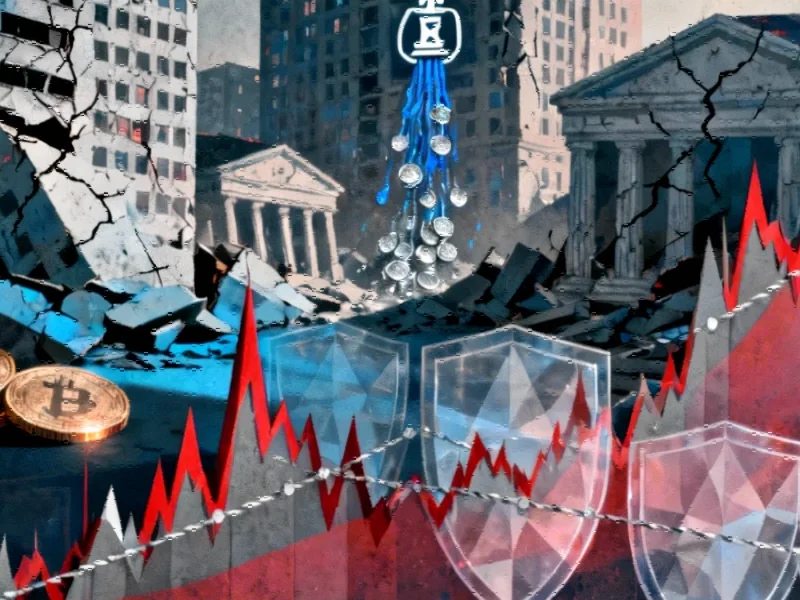Banking Giant Embraces Industrial Policy Shift
In a significant departure from traditional free-market positions, Jamie Dimon, CEO of JPMorgan Chase, has reportedly thrown his weight behind elements of Donald Trump’s interventionist industrial policy. According to reports, the banking leader has launched a $1.5 trillion, 10-year “Security and Resiliency Initiative” to support critical U.S. industries including advanced manufacturing, defense, and quantum computing.
“You need America to be very, very strong to secure global security,” Dimon stated, explaining the strategic shift. The initiative adds approximately $500 billion to an existing $1 trillion strategy and includes up to $10 billion in direct equity and venture capital investments. Sources indicate this represents one of the largest private sector responses to evolving industrial policy priorities.
Strategic Calculations and Political Alignment
Analysts suggest that while Dimon’s rhetoric aligns with Donald Trump‘s “America First” approach, the bank has taken a calculated position. The $10 billion in direct investments represents a relatively small portion of JPMorgan’s overall resources, and the 10-year timeframe provides flexibility amid political uncertainty. The report states that targeted industries include both Trump priorities like space and shipbuilding, as well as traditional Democratic priorities such as solar power and nanotechnology.
This balancing act reflects what experts describe as a new corporate reality where companies must navigate shifting political landscapes while maintaining commercial viability. Energy-efficiency projects previously categorized under ESG frameworks are now being rebranded as “resiliency” planning by executives seeking to avoid political controversy while continuing similar investments.
Broader Industrial Policy Context
The United States faces genuine supply chain vulnerabilities, particularly regarding critical minerals essential for weapons production. China’s recent restrictions on rare earth exports have heightened these concerns, accelerating policy responses across multiple sectors. According to the analysis, a sensible industrial approach would combine regulatory reform with targeted, time-limited support that encourages private investment.
The current administration’s approach differs significantly from previous strategies. While Joe Biden employed a combination of restrictions and incentives to reshore critical industries, Trump has favored more direct intervention including tariffs and investments in private companies. This evolution in policy direction coincides with broader market trends in resource security and manufacturing repositioning.
Risk Assessment and Historical Precedents
Business leaders who commit heavily to current administration priorities face significant risks, according to industry observers. Trump has already dismantled or suspended numerous Biden-era programs, particularly those addressing climate change, leaving some green infrastructure investments stranded. Meanwhile, China provides another cautionary tale where aggressive industrial strategy led to overcapacity in sectors like steelmaking and electric vehicles.
A recent IMF working paper estimated that capital misallocation resulting from China’s industrial policies may have reduced the country’s aggregate productivity by approximately 1.2% and GDP by up to 2%. These examples highlight the dangers companies face when aligning too closely with any single administration’s priorities, particularly as industry developments continue to evolve rapidly.
Strategic Hedging in Uncertain Times
JPMorgan appears to be employing what analysts describe as a “hedged bet” strategy. By maintaining that their $1.5 trillion initiative is “100 percent commercial” and targeting a diverse portfolio of industries, the bank aims to maintain flexibility regardless of political outcomes. This approach acknowledges that future administrations will likely face similar national security pressures, ensuring continued support for critical industries even if specific policy mechanisms change.
The banking giant’s stance reflects broader corporate calculations in an era of increasing government intervention in markets. As companies navigate this new landscape, many are watching how related innovations in technology and recent technology infrastructure might create additional opportunities for strategic positioning.
Ultimately, sources indicate that corporate leaders must weigh the benefits of aligning with current policy priorities against the risk that those priorities—and the administrations promoting them—may not endure. As one analyst summarized, “The question isn’t whether to engage with industrial policy, but how to do so without becoming captive to any single political agenda.”
This article aggregates information from publicly available sources. All trademarks and copyrights belong to their respective owners.
Note: Featured image is for illustrative purposes only and does not represent any specific product, service, or entity mentioned in this article.



